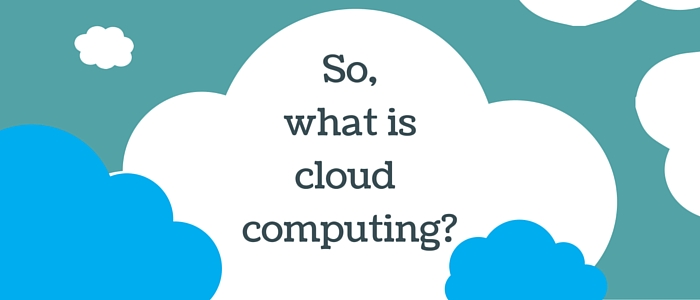I was first introduced to the concept of cloud back in the fourth grade. For most of us, the word cloud meant those little balls of cotton that exist in the sky. Little did I know that there would be a cloud in the virtual world as well! Come to think about it, there is even a little similarity in both these types of clouds. While the first one is used to save our thoughts and dreams (excuse me for being poetic!), the second one is being used to secure data.

Now, let us understand a little more about the growth of cloud computing as a phenomenon. While the buzzword has been around only for about half a decade, we all have been, in our own small ways, leveraging the power of the cloud for a long time. Emails, social networking sites and e-commerce websites are all powered by the cloud. It’s just that we did not relate them to the cloud we do today.
How does the cloud work?
The intention behind cloud is to allow access to all your data without having detailed information about infrastructure. The end users really don’t need such details. It’s quite similar to the way telecom providers function to enable services.
Cloud mainly consists of two layers - Frontend and Backend layer.
Frontend – This is the layer which is directly accessed by the users to allow access to further devices and/or programs. When you access your Facebook profile for instance, you make use of software running on the front end of the cloud.
Backend: The backend consists of the hardware and the software architecture that delivers the data we see on the front end. Cloud uses network layers to connect user devices such as laptops and mobile devices.
All the information/data is stored in data centers. Users can access the data center only through a company network or the internet or both from any location. It allows users to access their data/information on demand.
Advantages of cloud for businesses:
1. Flexibility:
- Users can access their information from any location
- Improve collaboration and sharing
2. Costs:
- No upfront investment in hardware and software
- Small and medium-sized businesses can easily access benefits
- No need to hire full-time technical staff
3. Innovation:
- Small and medium sized businesses can compete on the same level as big enterprises
4. Scalability:
- Ability to rapidly scale capacity
- Standardization across locations.
5. Maintenance:
- Low maintenance.
- Integrating technologies using APIs is extremely simple.
6. Security:
- Automatic updates
- Easy disaster recovery – content is stored remotely
Cloud is all about flexibility, mobility, low maintenance, access to technical expertise, scalability and cost reduction, among other factors. No wonder then that cloud is the go-to technology for SMEs as much as large enterprises.




